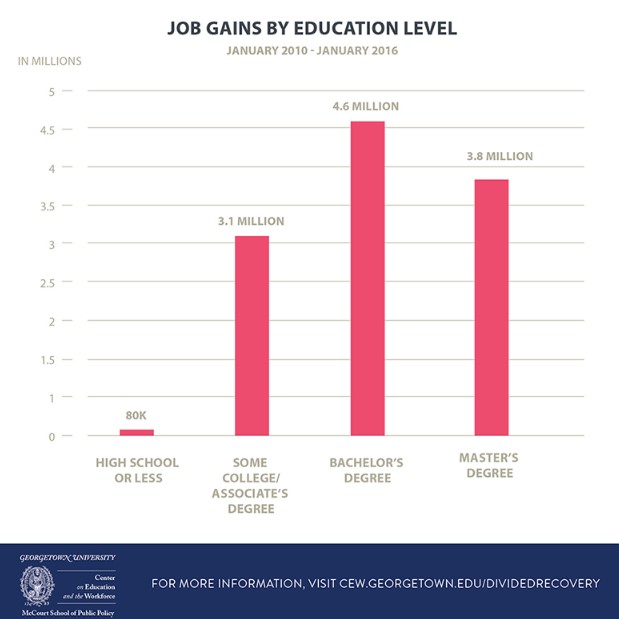While the United States has added 11.6 million job since the Great Recession, not all workers have been able to enjoy the recovery.
Of the new jobs, 8.4 million have gone to workers with a bachelor’s degree or higher, while just 80,000 have gone to workers with a high school diploma or less, according to a new report, America’s Divided Recovery: College Haves and Have-Nots, from the Georgetown University Center on Education and the Workforce.
Related: The Unemployment Rate for Young College Grads May Surprise You
“The modern economy continues to leave Americans without a college education behind,” Anthony Carnevale, report author and director of the Georgetown Center said in a statement.
Not only has the economy not added blue-collar or clerical jobs since the Great Recession, but it also hasn’t replaced jobs in those fields that were lost during the downturn.
Even in brighter spots in the blue-collar economy, net employment is down. The manufacturing industry, for example, has added 1.7 million jobs since the recession but still employs 1 million fewer people than it did prior to the Great Recession. The construction industry, which has added 834,000 new workers since the recovery, remains 1.6 million workers short of its pre-recession high.

By contrast, there are 1.6 million more people working in the business management industry than there were before the recession.
Those shifts have are reflected in the changing demographics of the workforce. This year is the first time in Americans history that workers with a bachelor’s degree or higher comprise a larger percentage of the workforce (36 percent) than those with a high school diploma or less (34 percent).





